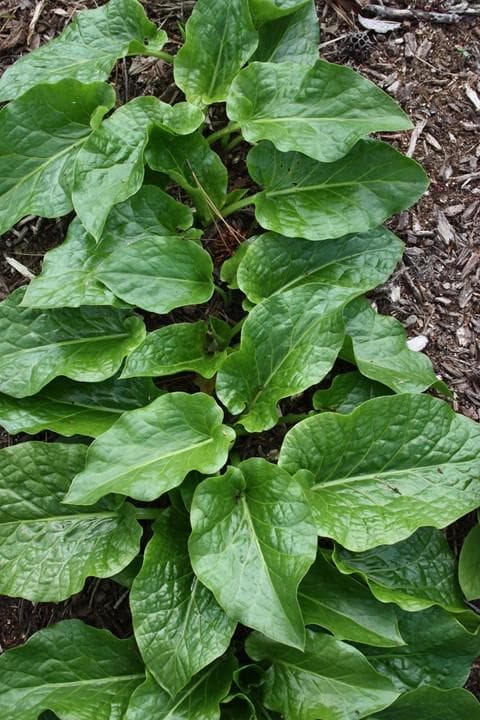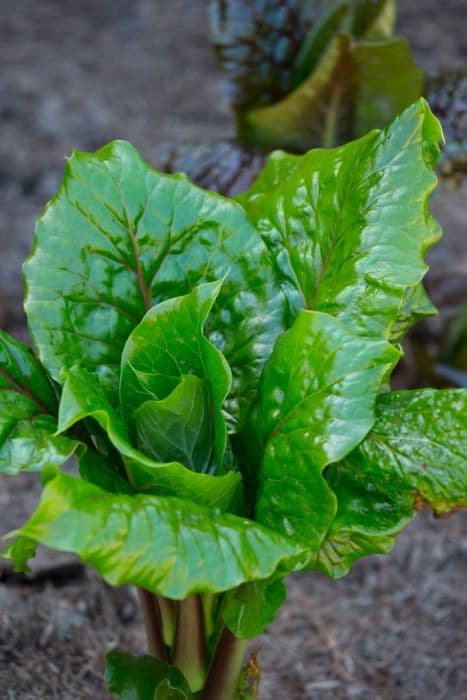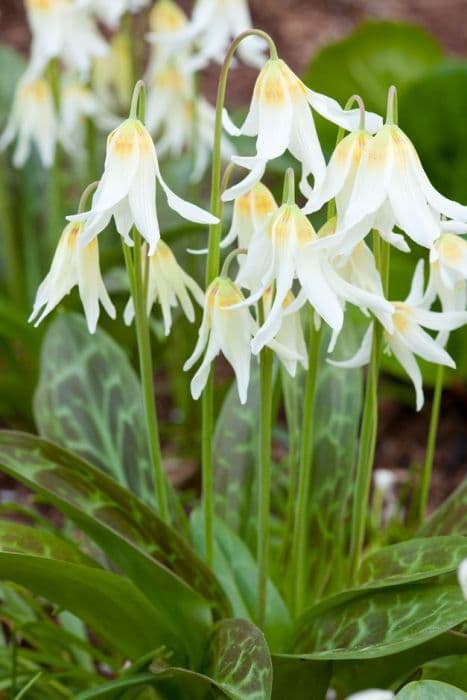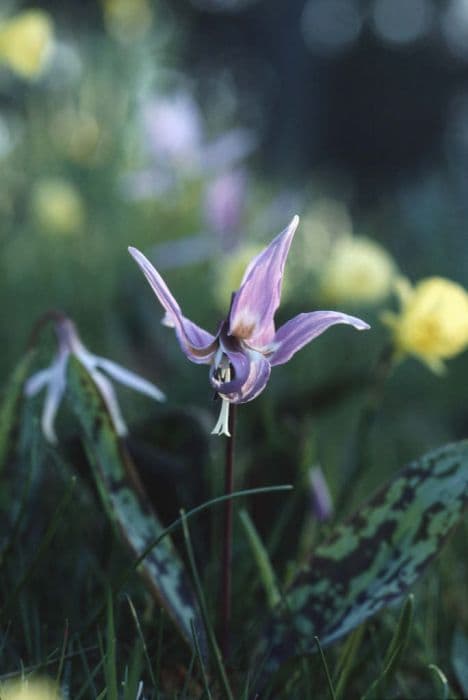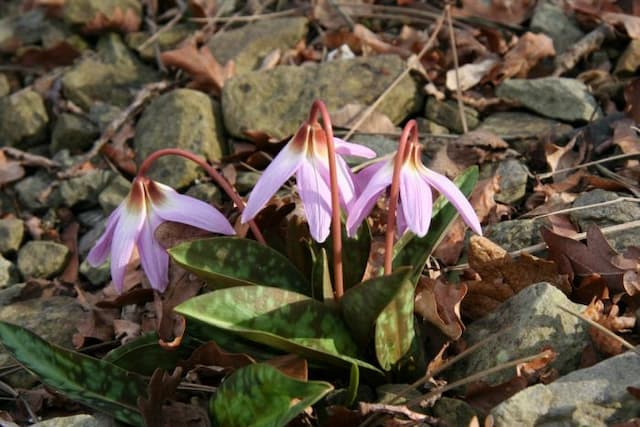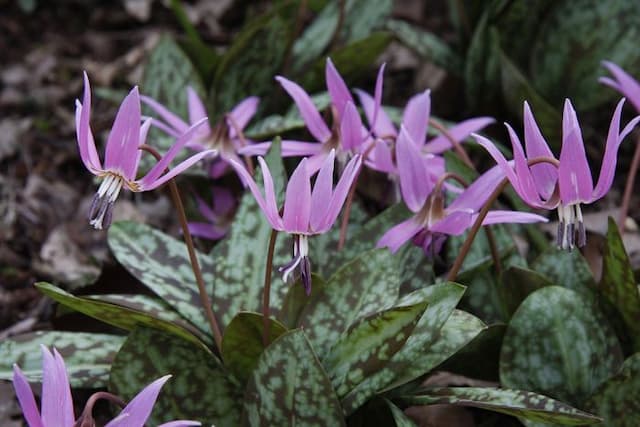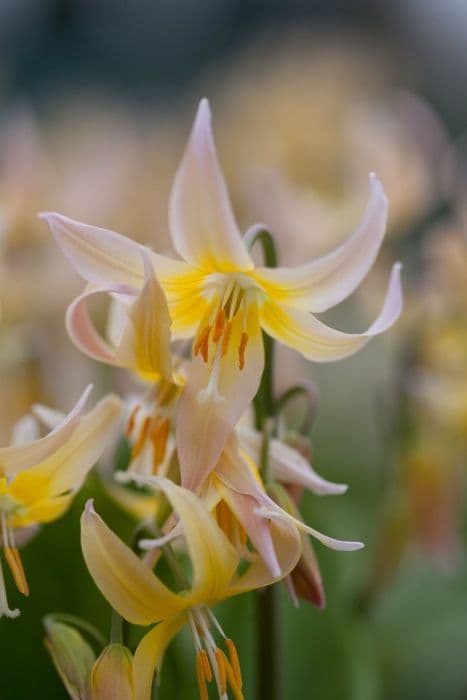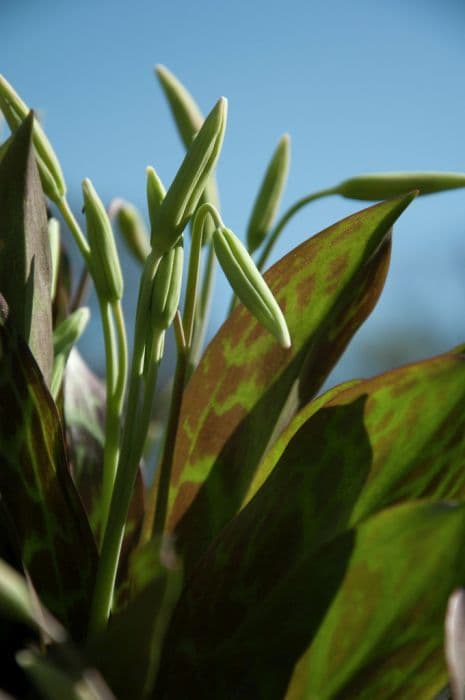Tulip Tulipa 'Annie Schilder' (3)
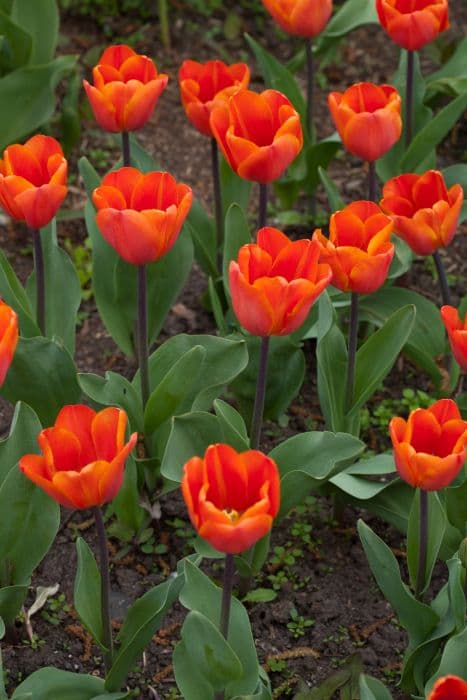
ABOUT
The tulip named 'Annie Schilder' is a captivating plant known for its strikingly beautiful flowers. The bloom exhibits a warm and rich color palette, typically featuring a gradient of orange to reddish hues that can invoke the feeling of a sunset. The petals have a classic tulip shape but are distinct with their slightly fringed or feathered edges, giving them a soft and inviting texture. The overall look of the 'Annie Schilder' tulip is one of elegance and vibrancy. The petals often show a gentle transition from a deeper, fiery base to a lighter tip, which can sometimes appear to almost glow when caught in the right light. The inside of the flower may reveal a different shade or additional colors that contrast with the exterior, adding depth and complexity to its appearance. This variety of tulip typically blooms in the spring, providing a burst of color in gardens after the winter months. The foliage that accompanies these flowers is fresh green, and the leaves are lance-shaped, creating a lovely backdrop that further accentuates the beauty of the blooms. The 'Annie Schilder' tulip is a valued addition to any garden due to its stunning looks and the joyous ambiance it brings with its blossoms that are often reminiscent of a warm, glowing hearth on a cozy evening.
About this plant
 Names
NamesFamily
Liliaceae.
Synonyms
Annie Schilder Tulip, Tulip 'Annie Schilder'.
Common names
Tulipa 'Annie Schilder'
 Toxicity
ToxicityTo humans
Tulip 'Annie Schilder' is a cultivar of tulip. Tulips are not highly toxic to humans, but they do contain compounds that can cause irritation. Ingesting tulip bulbs can cause abdominal pain, diarrhea, and vomiting. Dermatitis may occur after handling them due to the presence of allergenic lactones. It is advisable to avoid eating any part of the plant.
To pets
Tulip 'Annie Schilder' is a variety of tulip. Tulips are toxic to pets, especially dogs and cats. If ingested, the plant can cause gastrointestinal irritation, drooling, loss of appetite, depression of the central nervous system, convulsions and cardiac abnormalities. The bulb of the tulip is the most toxic part. If a pet consumes a large quantity of tulip bulbs, it is important to seek veterinary assistance.
 Characteristics
CharacteristicsLife cycle
Perennials
Foliage type
Deciduous
Color of leaves
Green
Flower color
Orange
Height
1-2 feet (30-60 cm)
Spread
1-2 feet (30-60 cm)
Plant type
Bulb
Hardiness zones
3
Native area
Central Asia
Benefits
 General Benefits
General Benefits- Aesthetic Appeal: Adds vibrant color and visual interest to gardens and landscapes with its captivating blooms.
- Pollinator Attraction: Draws in beneficial pollinators such as bees, which are vital for the pollination of many plants.
- Seasonal Interest: Provides a delightful display in spring when not much else is in bloom, heralding the change of seasons.
- Versatility: Can be planted in a variety of settings such as borders, containers, and as cut flowers for indoor decoration.
- Cultural Significance: Often associated with the start of spring and celebrations such as Easter, symbolizing rebirth and new beginnings.
- Low Maintenance: Once established, tulips require minimal care beyond occasional watering and deadheading to promote further flowering.
- Hybrid Vigor: As a hybrid, it may exhibit greater vigor, adaptability, and resilience than some pure species varieties of tulips.
 Medical Properties
Medical PropertiesThis plant is not used for medical purposes.
 Air-purifying Qualities
Air-purifying QualitiesThis plant is not specifically known for air purifying qualities.
 Other Uses
Other Uses- Tulips can be used as a natural pest control in gardens as they attract beneficial insects such as ladybugs, which help to control aphid populations.
- The bulbs of tulips can be used in a technique called "forcing," which allows gardeners to bloom the flowers indoors during wintertime.
- Tulips are often used in companion planting to take advantage of their early growth to mark the locations of other perennial plants that emerge later in the spring.
- The strong stems of tulips make them suitable for creating natural plant supports for weaker-stemmed plants or for interweaving to form living fences.
- Some cultures use dried tulip petals in potpourri blends for their color and slight fragrance, adding a decorative touch to homes.
- Used in educational settings, tulips can serve as a tool for teaching botany and horticulture, demonstrating plant growth and development cycles.
- Tulip petals, being edible, can be crystallized with sugar and used as unique and decorative dessert garnishes.
- Tulips can be planted to create elaborate garden patterns or mosaics, commonly seen in large public gardens or parks.
- The contrasting colors of tulip flowers can be used to teach principles of color theory and design when arranging plant beds or bouquets.
- The tulip's life cycle can be used as a biological indicator of seasonal change, helping to monitor climate patterns in a specific area.
Interesting Facts
 Feng Shui
Feng ShuiThe Tulip is not used in Feng Shui practice.
 Zodiac Sign Compitability
Zodiac Sign CompitabilityThe Tulip is not used in astrology practice.
 Plant Symbolism
Plant Symbolism- Perfect Love: As a tulip, the 'Annie Schilder' variety is often associated with perfect or deep love due to their bold blooms and graceful appearance.
- Rebirth: Tulips are symbolic of spring and renewal, representing the cycle of life and the rebirth of nature after the winter season.
- Royalty: With its unique and lush appearance, Tulipa 'Annie Schilder', like many tulips, can symbolize royalty and a sense of opulence.
- Fame: The standout color of the Tulipa 'Annie Schilder' represents the idea of fame or being in the spotlight, much like the attention tulips attract when they blossom.
- Forgiveness: In certain traditions, tulips can also signify a request for forgiveness, with the 'Annie Schilder' variety carrying this meaningful apology in its beauty.
 Water
WaterTulips, including the 'Annie Schilder' tulip, prefer a moderate amount of water during their active growing phase in spring. Water the bulbs liberally when planting, ensuring that the soil is moistened thoroughly. After they are established, water them every few days, providing approximately one inch of water per week, especially if the weather is dry. Using a gentle spray to mimic rainfall, apply water directly to the soil around the tulips to avoid wetting the foliage, which could lead to fungal diseases. Once the tulips have bloomed and the leaves begin to yellow, you can reduce watering as the bulbs go dormant.
 Light
LightTulips, like 'Annie Schilder', thrive in full sun, meaning they need at least six hours of direct sunlight a day to perform their best. Place them in a location that receives early morning or late afternoon sun, as intense midday sun can sometimes be too harsh for the flowers. A spot that gets bright, indirect light for the remainder of the day is ideal for tulips to develop strong stems and vibrant blooms.
 Temperature
TemperatureTulips, including 'Annie Schilder', have a broad range of temperature tolerance, but they prefer cool springtime conditions. They can survive winter temperatures as low as -40 degrees Fahrenheit when appropriately mulched and planted deeply. Ideal growing temperatures for tulips are between 50 and 65 degrees Fahrenheit during the day and slightly cooler at night. Bulbs require a period of cold dormancy, ideally below 55 degrees Fahrenheit, to properly develop and bloom in the spring.
 Pruning
PruningPruning for 'Annie Schilder' tulips, as with most tulip varieties, is minimal. Remove spent flower heads after blooms fade to prevent the plant from expending energy on seed production. Leave the foliage in place until it turns yellow and dies back naturally, usually a few weeks after flowering. This allows the plant to reabsorb nutrients from the leaves and store energy in the bulb for the next season. The best time for tidying up tulip plants is early to mid-summer after the leaves have fully yellowed.
 Cleaning
CleaningNot needed
 Soil
SoilFor Tulips, a well-draining, sandy loam soil amended with compost and a neutral to slightly acidic pH of 6.0 to 7.0 is best. Ensuring good drainage reduces the risk of bulb rot.
 Repotting
RepottingTulips, being perennial bulbs, do not require frequent repotting. Bulbs should be lifted and divided every 3-5 years to prevent overcrowding.
 Humidity & Misting
Humidity & MistingTulips prefer average room humidity. They thrive outdoors best but can tolerate indoor environments without specific humidity adjustments.
 Suitable locations
Suitable locationsIndoor
Provide bright, indirect light and cool temperatures to mimic spring conditions.
Outdoor
Plant bulbs in autumn for spring bloom in well-drained soil.
Hardiness zone
3-8 USDA
 Life cycle
Life cycleThe life of the Tulip 'Annie Schilder' begins with the planting of the bulb in autumn before the frost. The bulb overwinters underground and in spring, it breaks dormancy to push through the soil, developing a stem, leaves, and then a bud. The bud blooms into a distinct orange flower that is characteristic of the 'Annie Schilder' variety, typically in mid to late spring. After flowering, the tulip’s blossom fades and the plant enters a period of senescence; the foliage yellows and dies back as the plant redirects energy to the bulb for next year's growth. Throughout the summer, the bulb lies dormant underground. The cycle restarts with the next autumn, as the bulb is triggered by cooling temperatures and begins to develop roots in preparation for the next growing season.
 Propogation
PropogationPropogation time
Spring
The Tulipa 'Annie Schilder', commonly known as Tulip 'Annie Schilder', is typically propagated by bulb division. The ideal time for this activity is during the dormant period, once the foliage has died back, usually in late summer or early fall. To propagate, you would gently lift the bulbs from the ground using a spade, being careful not to damage them. Shake off any excess soil and then separate the smaller daughter bulbs from the parent. These smaller bulbs can be replanted immediately at a depth of about 6 to 8 inches (15 to 20 centimeters) and spaced around 4 to 6 inches (10 to 15 centimeters) apart, ensuring that the pointed end is facing upward.
